Breast milk is hands-down the best source of nutrition for most newborns and infants. It has everything a baby needs (and nothing a baby doesn’t need) to grow and develop into a healthy and happy young child.
I mean, let’s be honest – they don’t call it ‘liquid gold’ for nothing!
According to the National Institutes of Health (NIH), breast milk contains approximately 87% water, 4% fat, 1% protein, and 7% carbohydrate (calculated as lactose). Its energy content is 60–75 kcal/100 ml.
RELATED: TikTok Mom Reveals Genius Breast Milk Storage Hack
Not only that, but it’s made up of various growth factors, antibodies, good bacteria for gut health, vitamins, minerals, enzymes, and much more – ensuring your baby never goes a day without the right nutrients.
It’s nutritious. It’s natural. And the baby likes it.
That’s why both the World Health Organization (WHO) and the American Academy of Pediatrics (AAP) agree that babies should be exclusively breastfed for the first six months of life before introducing solids.
Storage Guidelines for Different Types of Breast Milk
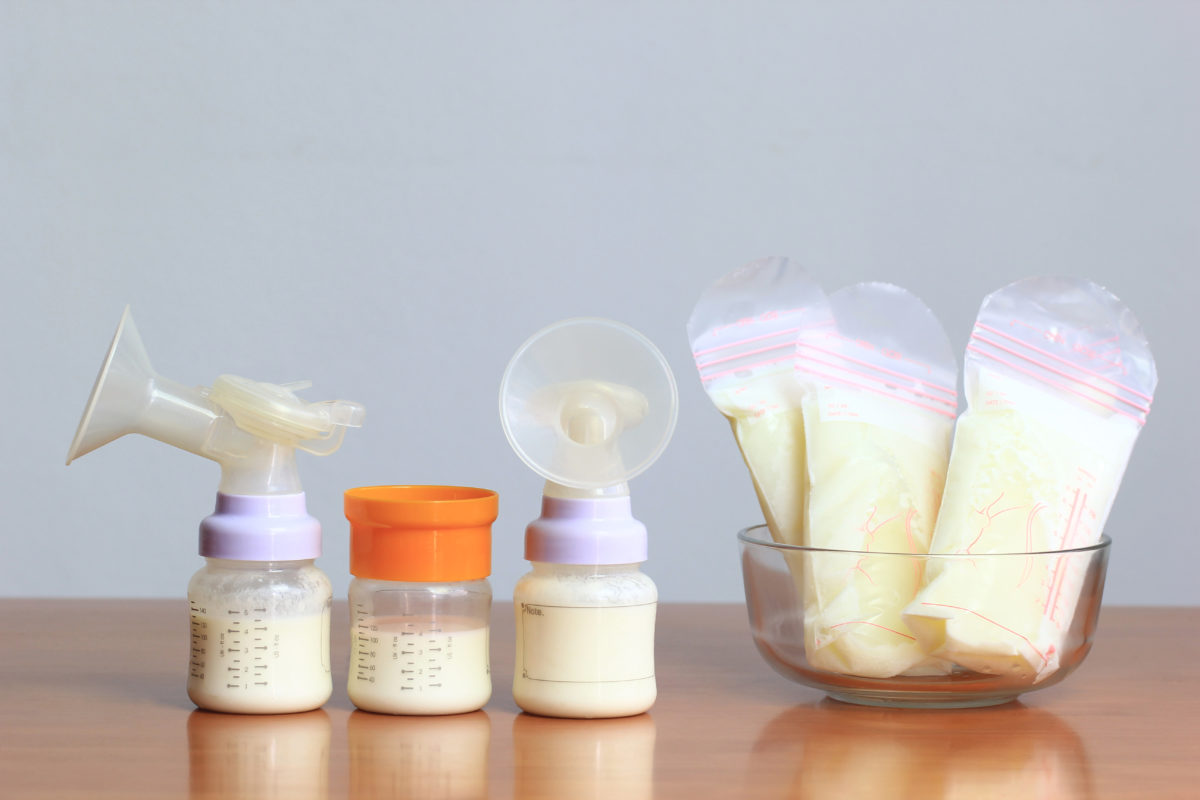
As nutritious as breast milk is, it can all go to waste if not stored and tracked properly. Much like the milk that’s been sitting in the back of your refrigerator for the past two weeks, breast milk can – and will – spoil.
Don’t worry – the Centers for Disease Control and Prevention (CDC) has its own set of general guidelines for storing human milk at different temperatures. Let’s take a quick look at what the CDC recommends:
Freshly expressed or pumped. You can safely store fresh-pumped milk for up to four hours at room temperature, up to four days in the refrigerator, and between six and 12 months in the freezer.
Thawed or previously frozen. You can safely store thawed-out milk for up to two hours at room temperature and up to 24 hours in the refrigerator, but you should never freeze it again after thawing it.
Leftover from a prior feeding. If your baby doesn’t finish a bottle, make sure you use it within two hours after the baby is finished feeding. If you don’t use it in the allotted time, you’ll have to throw it out.
The CDC also notes that there are a number of factors that influence how long breast milk can be stored at certain temperatures. Some of those factors include milk volume, room temperature when milk is expressed, temperature fluctuations in the refrigerator and freezer, and cleanliness of the environment.
10 Tips When Storing and Tracking Breast Milk
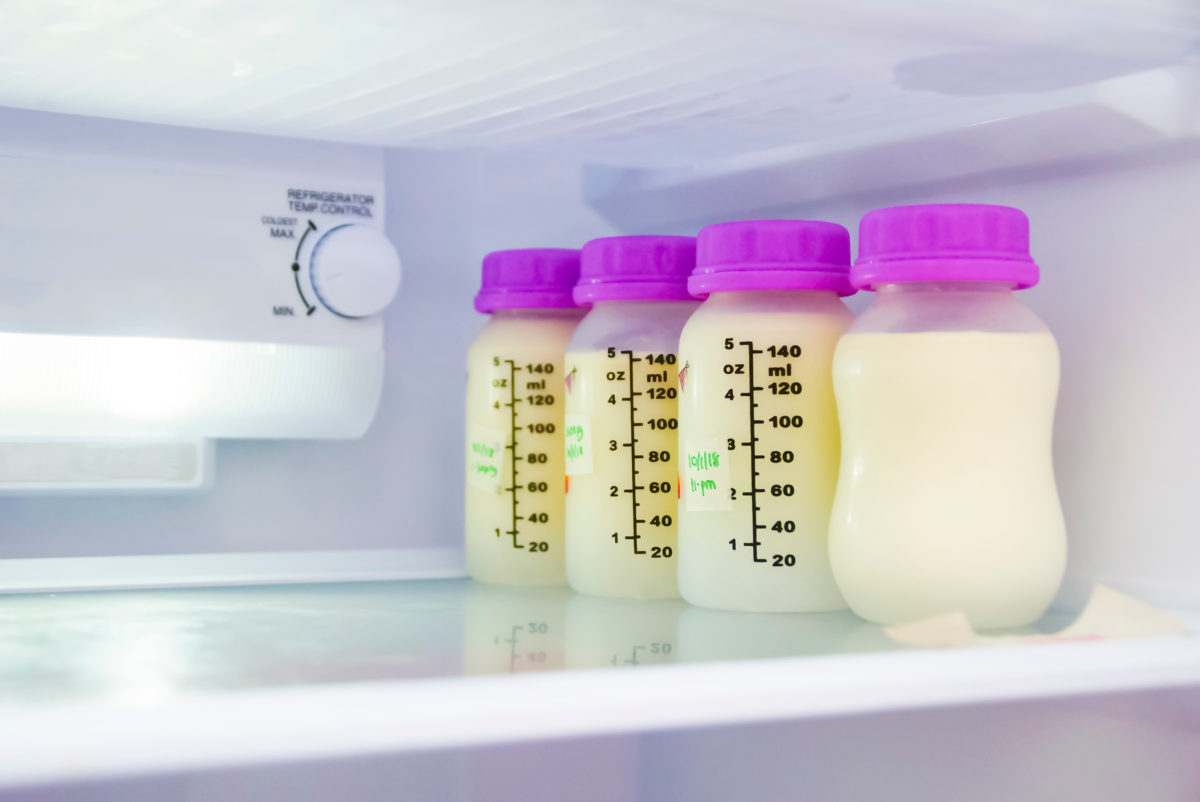
Proper storage is essential to preserving the vital nutrients and components of breast milk – which helps to prevent bacterial growth and maintain the quality and safety of the milk for your baby’s consumption.
Whether you’re a working mother, managing an abundant supply, or simply need a little flexibility in your life, understanding how to store breast milk correctly can make a significant difference in your journey.
Don’t worry – Mamas Uncut has you covered.
With the right knowledge and techniques, parents can ensure that every drop of a mother’s precious milk retains its nutritional and immunological properties, providing their baby with the best possible start in life.
That said, here are 10 of our most prominent tips and tricks!
10. Wash Hands Before Handling Breast Milk
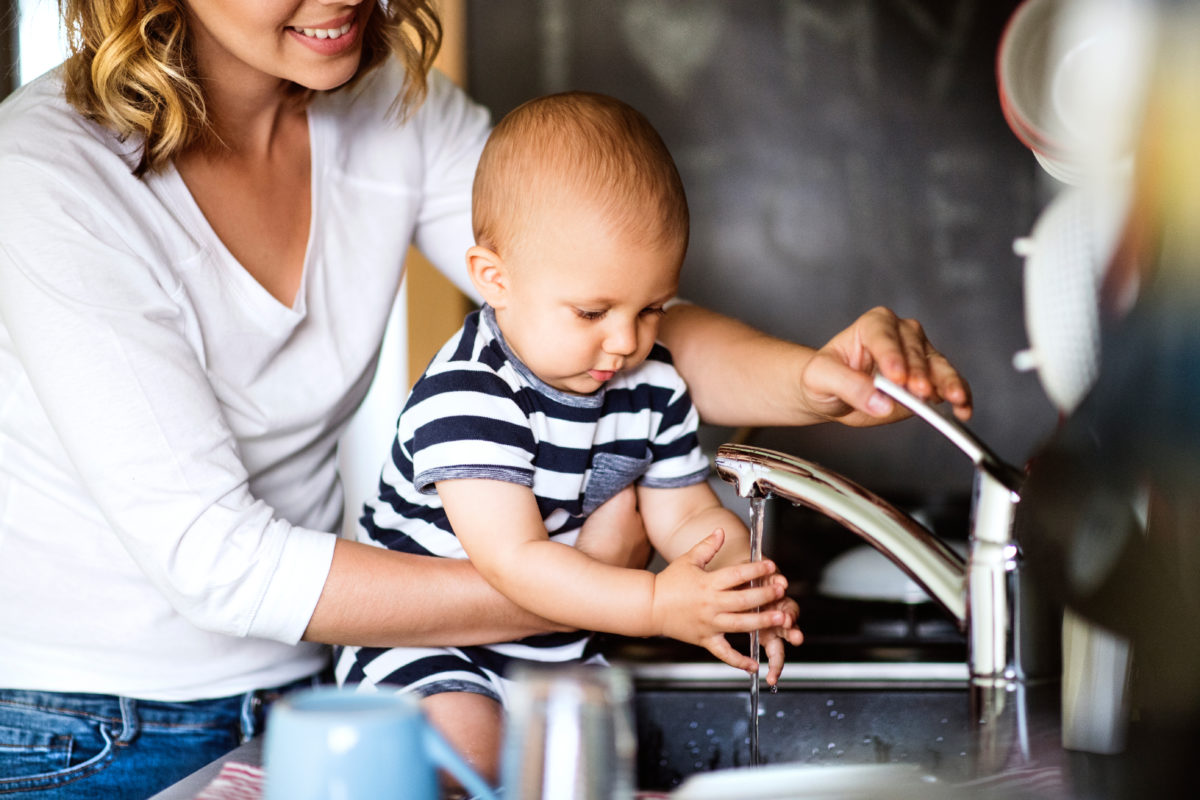
Breast milk is food – and like any other food, it doesn’t take much to contaminate it. That’s why we recommend washing your hands with soap and water before handling, feeding, or pumping breast milk.
It’s no different than a chef washing his/her hands before preparing a meal.
About to feed your baby? Wash your hands first. About to use a breast pump? Wash your hands. Putting milk in storage containers? Wash your hands. Transferring to a new container? Wash your hands first.
It might seem redundant, but bacteria is everywhere – and it’s invasive.
Just think about all the things you touch on a daily basis. Until you wash your hands, all that bacteria accumulates from one surface to the next. Your job is to keep that bacteria out of your breast milk.
And when it comes to cleanliness, don’t stop there.
Before you do anything, make sure the area around you and any containers, equipment, or supplies being used are cleaned and disinfected. Even if it was sitting in the cupboard for a couple of days, wash it first.
9. Store Breast Milk in the Right Container
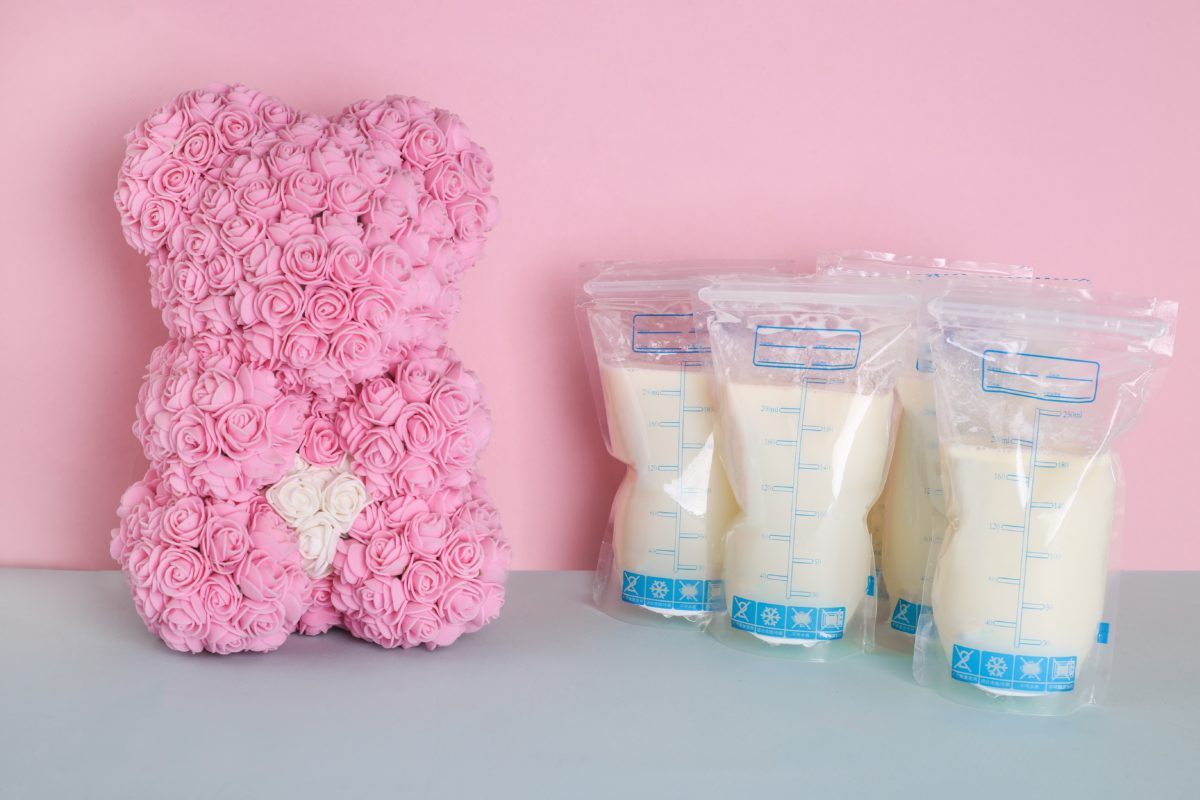
Storing breast milk in the right container is not only recommended but required to ensure the health and safety of your child. It’s key to maintaining the integrity and overall nutritional value of your breast milk.
The truth is the wrong container can wreak havoc on your milk supply.
It needs to be free of BPA (Bisphenol A), needs to be able to withstand the freezing and thawing process, needs to ensure a tight seal to keep bacteria out, and must be properly measured to ensure ease of use.
When storing breast milk, you have three primary options:
Storage Bags. You should only store breast milk in storage bags designed exclusively for breast milk. These bags are easy to stack in the freezer, and some can be filled directly from the breast pump.
Storage Bottles. Only use food-grade storage bottles made of BPA-free plastic or glass. Avoid bottles with the recycle symbol number 7 and make sure they have a tight-fitting lid to prevent contamination.
Frozen Cubes. You can also use a baby food freezer tray to freeze your milk into cubes or spheres. Make a large batch and freeze it into portions, allowing you to grab just the right amount at the right time.
The right container can make all the difference when storing breast milk and is fundamental to ensuring that the milk remains as beneficial for your baby as when it was expressed – that’s what’s important.
8. Don’t Forget to Label Your Breast Milk
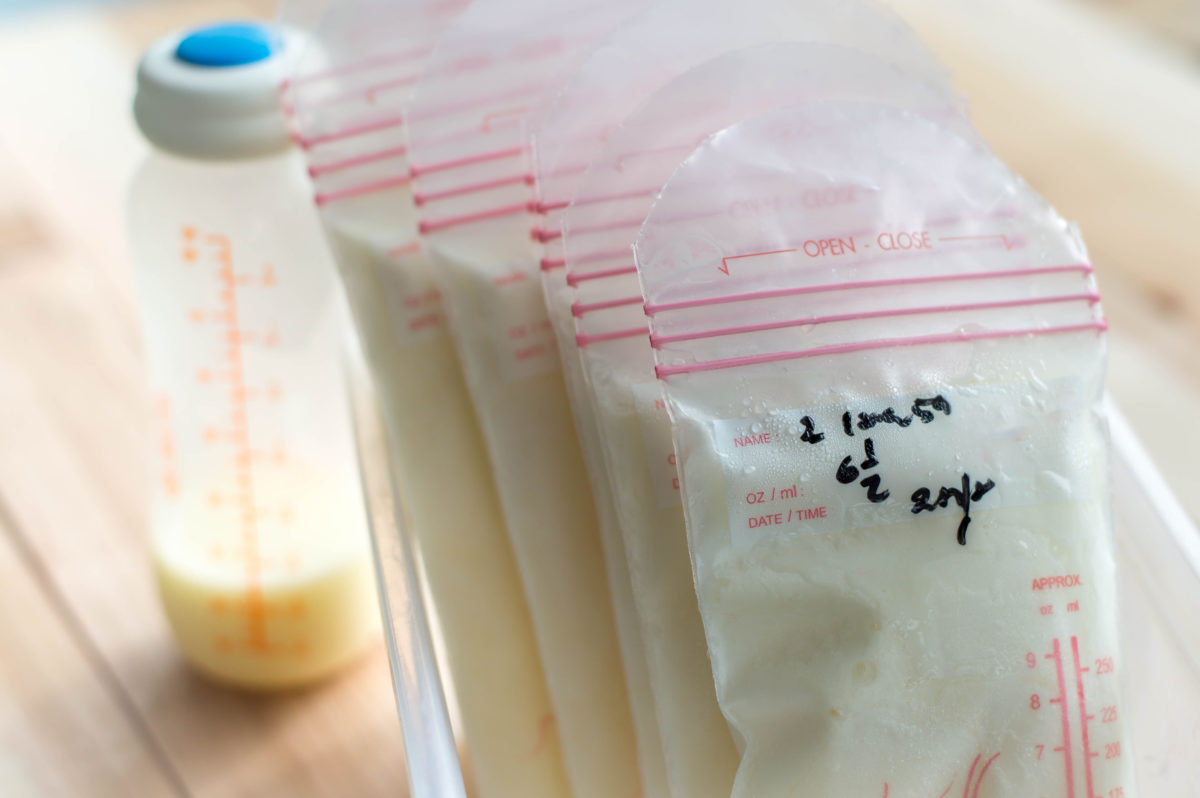
Breast milk doesn’t last forever and will eventually spoil. Labels ensure the oldest milk is used first, which is crucial for managing the quality and safety of stored milk – adhering to the ‘first in, first out’ mindset.
The more detailed the label, the better off you’ll be.
At the very least, include the date and time of the collection on the label. You can also include the expiration date (depending on how you’ll be storing it), your baby’s name, and the measured amount.
You’ll also receive pre-printed labels from the hospital.
The pre-printed labels should be filled out with the expressed date and measured amount, and given to a hospital staff member – that way, they can ensure your baby is given the right milk at the right time.
7. How to Properly Track Your Breast Milk Supply
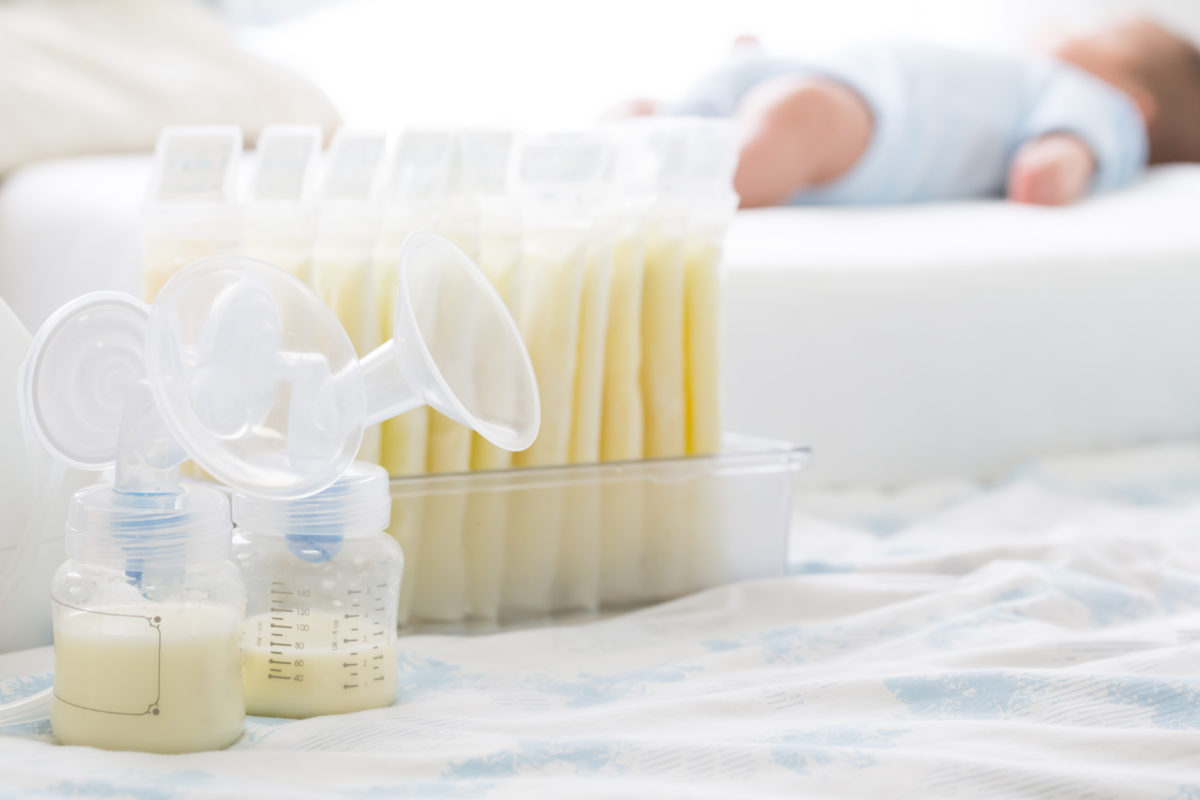
We recently received a question from one of our anonymous readers. They were wondering if any of our mama experts out there had any advice for tracking their breast milk stash or supply for future use.
“Looking for an app to track my bm freezer stash. With my last baby I had an app that told me how long my freezer stash would last. I can’t for the life of me remember what app it was, and I want to use it again so I have an idea of how long my stash will last if I stop pumping,” they wrote in our online forum.
One mother suggested an app called ‘Baby Tracker.’ It’s available on the Google Play Store and Apple App Store, and allows you to track your baby’s breastfeeding, diaper changes, sleep patterns, and more.
Other apps that can help include Pump Log, Milk Maid, Baby Connect, Milk Stash: Breast Feeding App, Pumping Work App, Feed Baby, and MyMedela. They’re each unique, so find the one you like the most.
Of course, labeling your stash is perhaps the most tried-and-true method of tracking your milk supply.
6. Can You Add Fresh Milk to Stored Milk?
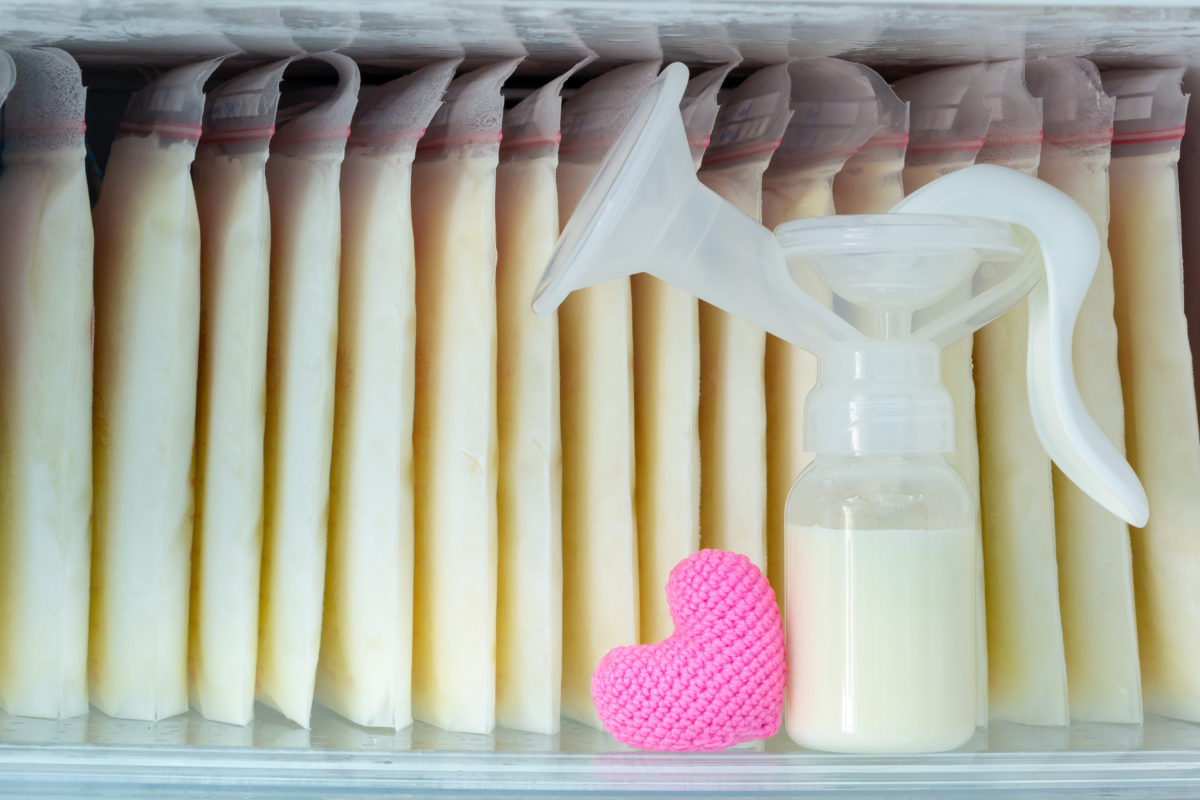
Parents need to be careful when adding freshly expressed milk to a stored supply – it’s possible, but only under the right circumstances. And if those circumstances aren’t satisfied, bacterial growth is inevitable.
The first and most important rule is to never mix warm with cold.
Breast milk is warm when babies nurse, and many babies prefer it warm when taken from a bottle, but you should never directly mix it with your cold or frozen stash – instead, always cool the fresh milk first.
It’s also important to consider storage duration guidelines when mixing fresh and stored milk.
For example, if you add freshly expressed (but cooled) milk to milk you expressed two days ago, the duration of storage should be based on when the older milk was first stored – not the newer milk.
5. Don’t Wait to Freeze Milk – Do It Right Away
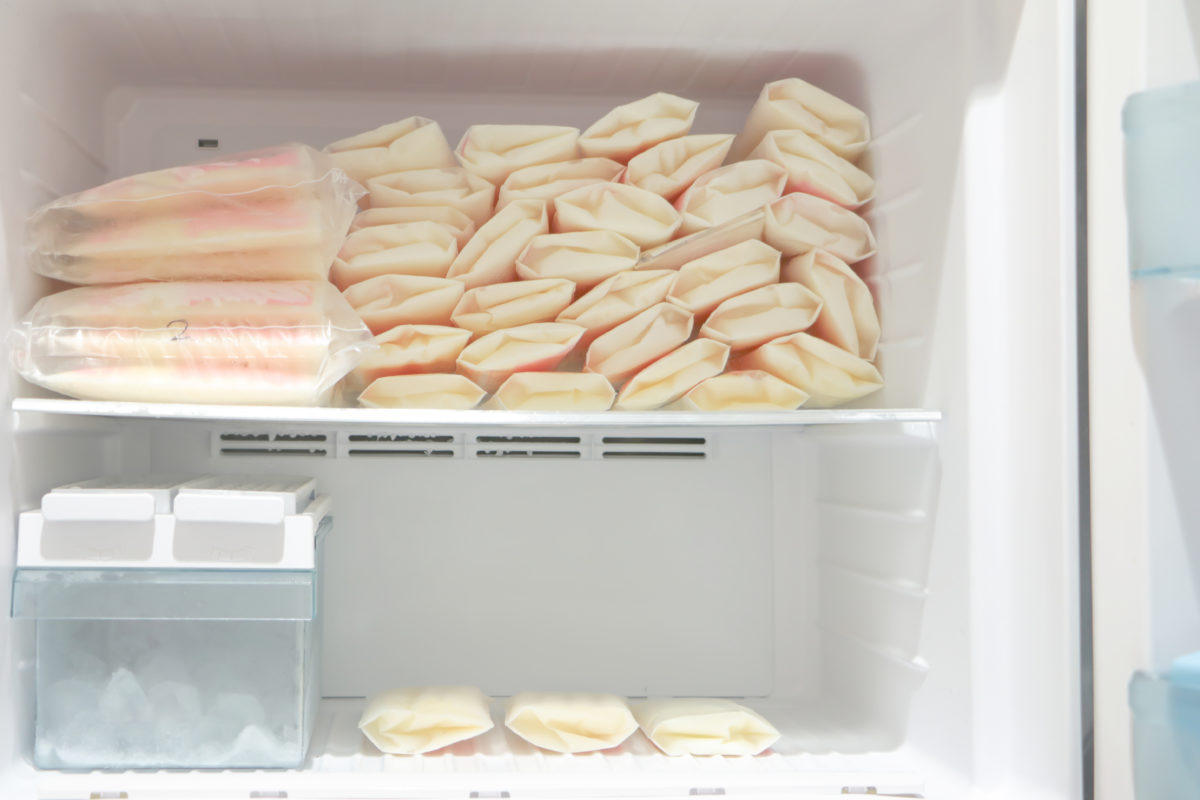
As we discussed above, freshly expressed milk is good for four days in the refrigerator. If you plan on using it within those four days, there’s no reason to freeze it—just refrigerate it until you’re ready to use it.
If you don’t plan on using it right away, freeze it – but make that decision immediately.
Freezing breast milk shortly after pumping locks in its high-quality nutritional content and ensures that these beneficial nutrients are retained until the milk is thawed and consumed – ensuring a healthy baby.
That said, it’s not the end of the world if you forget to freeze it right away – as long as you freeze it within that four-day grace period, you should be fine. After all, freezing it is a lot better than throwing it away.
4. Freeze Milk In Small Amounts
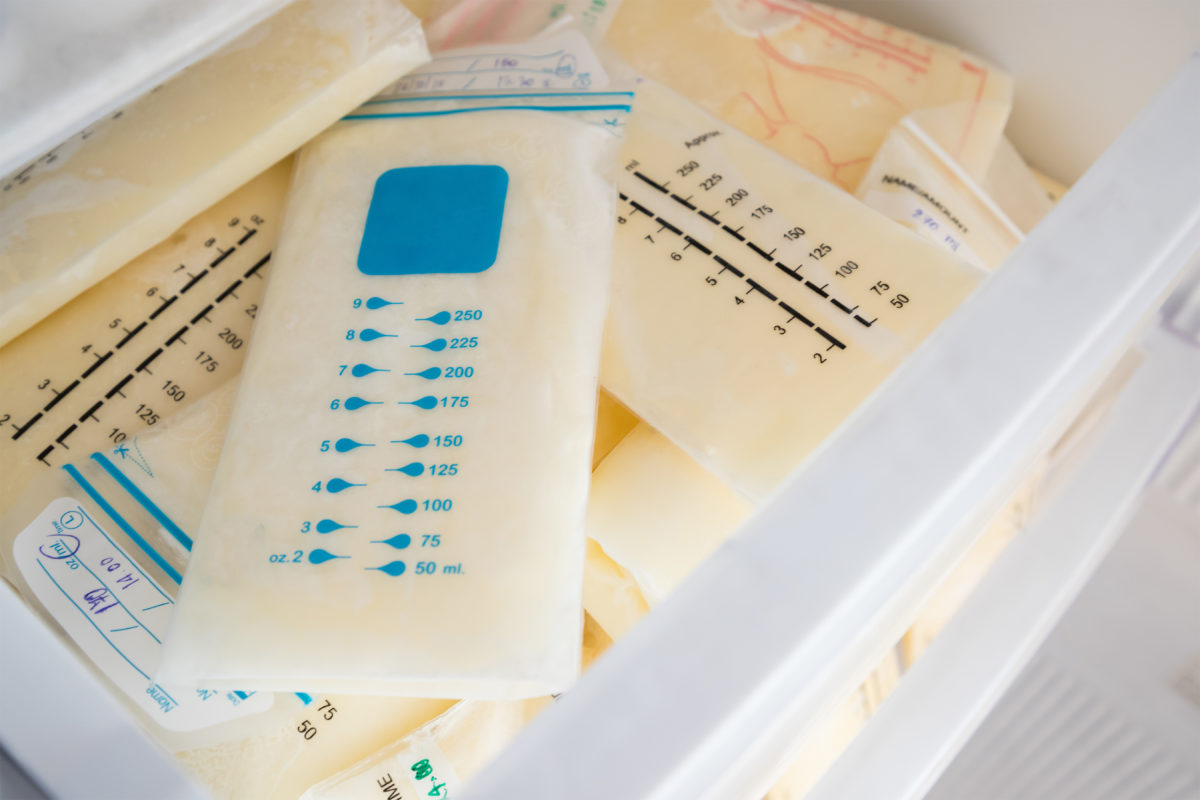
In terms of strategy, freezing breast milk in small amounts is a game-changer for mothers who want to avoid wasting milk once it’s thawed – especially since thawed milk should never be frozen a second time.
But don’t just measure out one size – do several.
For example, we recommend freezing milk in one-, two-, three-, and four-ounce servings – that way, you’re prepared for those moments when your baby needs a snack, but also if they need a large meal.
Not only that, but small amounts thaw more quickly and evenly.
This method allows parents to thaw only the amount of milk needed for a single feeding while minimizing waste and ensuring that every drop of liquid gold is used – the last thing we want is to waste your supply!
3. Don’t Store Breast Milk in the Refrigerator Door

If you had to guess, how many times do you think you open your refrigerator or freezer door each day?
According to ENERGY STAR, the U.S. Environmental Protection Agency’s energy-saving program, Americans open their refrigerators an average of 33 times a day – that’s more than once per hour.
When this happens, the temperature in the area changes and fluctuates.
For that reason, we don’t recommend storing breast milk in the refrigerator door – the constant changes in temperature can lead to the degradation of breast milk’s nutritional and immunological quality.
Instead, store your breast milk supply on an interior shelf and towards the back of the refrigerator.
Storing breast milk in the main part of the refrigerator also minimizes the risk of accidental spills or leaks, and ensures that the milk is readily available and in good condition when your baby gets hungry or fussy.
2. How to Store Breast Milk While Traveling
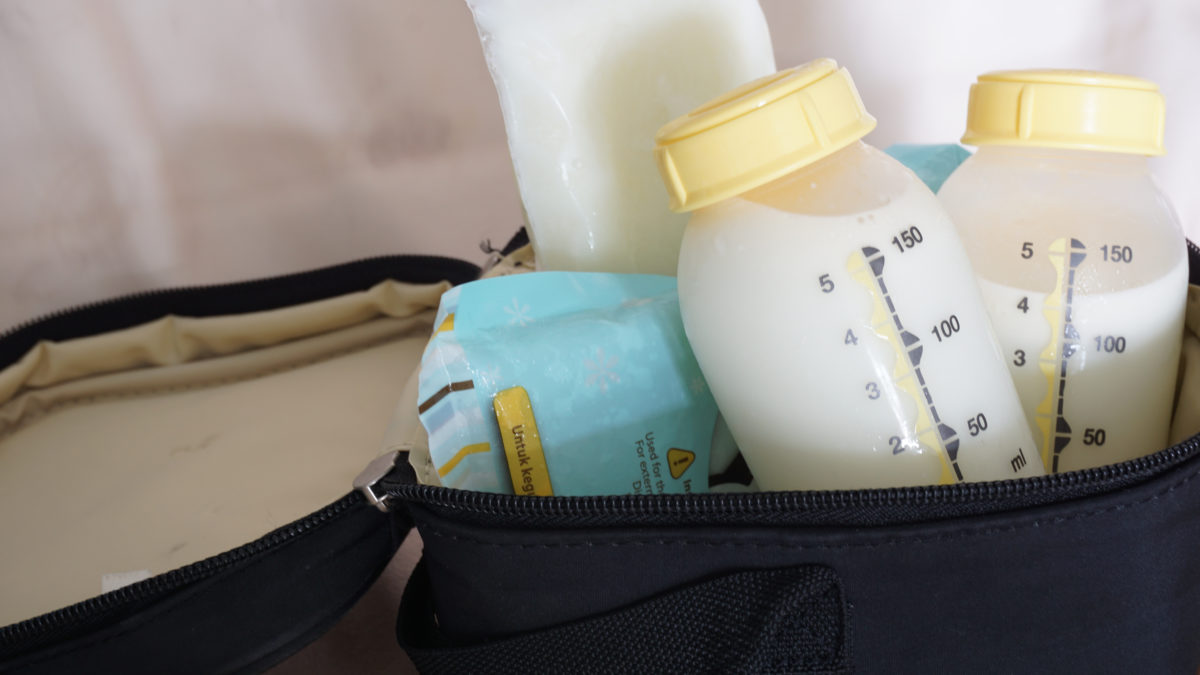
This is another question that got asked in our Answers by Mamas Uncut forum online – where mothers come together to share tips and tricks for all things motherhood, including traveling with breast milk.
“I am traveling to visit my home state next week. But I am also pumping to build a stock when I return to work. Any recommendations on how to keep my milk frozen for when I drive back to my home? (6.5 hour is drive plus stops for baby!),” one of our anonymous readers wrote to our team of mama experts.
Of all the replies they received, one was more common than most – ice packs!
Ice packs are great for short-term storage, but keep in mind they’ll only last for a few hours – maybe longer if in an insulated cooler with several packs. Adding ice cubes can also extend their shelf life.
For a six-hour drive, you might want to make a pit stop halfway to get new ice.
Other experts suggest using dry ice – a solid carbon dioxide that maintains a temperature of -78.5°C (-109.3°F), significantly colder than a standard freezer. Just make sure you exercise caution with dry ice.
1. Make Sure Your Containers Are Secured
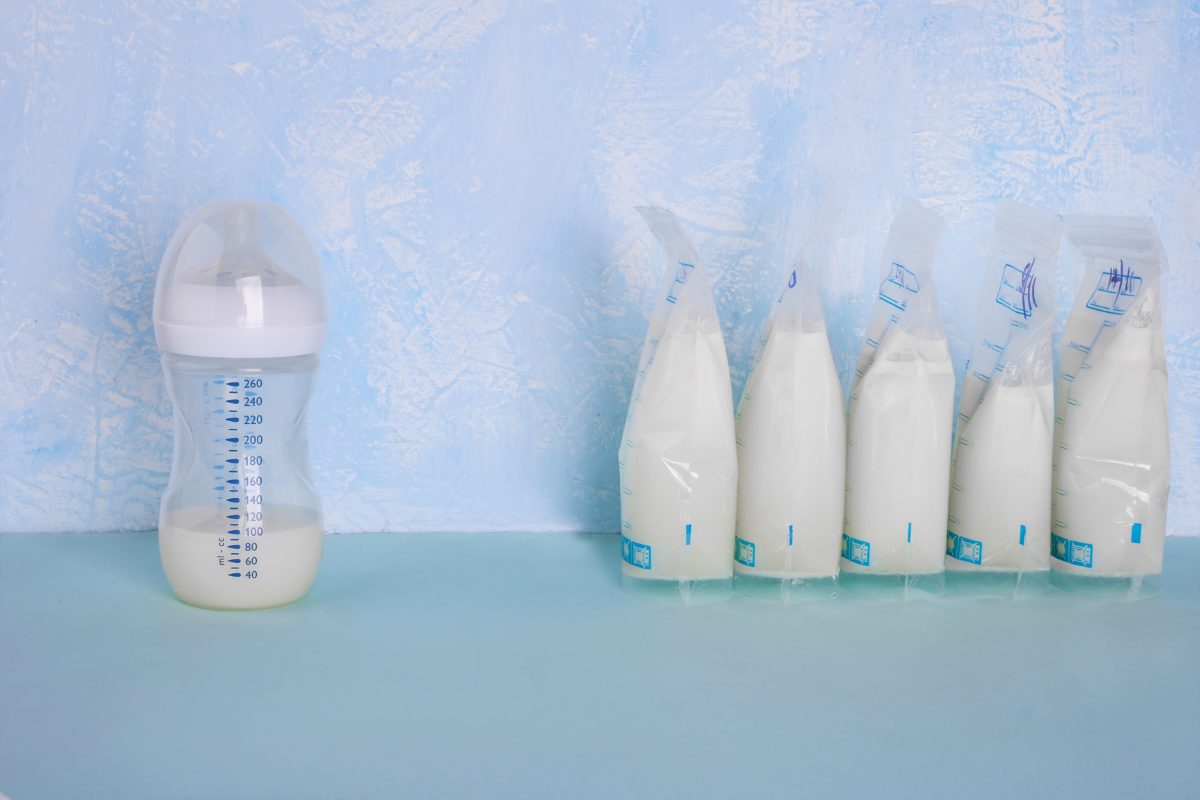
Our final piece of advice is one that goes without saying – but we’re going to say it, just in case.
Always make sure your storage containers are secured – and that goes for storage bags and bottles.
Airtight seals prevent air exposure, which can introduce bacteria and other contaminants into the breast milk. If a bag or container wasn’t properly sealed, then it’s best to throw it out – instead of risking it.
Tight sealing also guards against leaks and spills, which can lead to unnecessary waste. To avoid any letdowns, make sure you close lids tightly and inspect bags/containers for holes before filling it with milk.
Looking for More Tips and Tricks When Breastfeeding?

Mastering the art and science of parenting doesn’t happen overnight – I mean, it does for some, but it’s not common. It requires time, patience, and the willingness to learn from both successes and setbacks.
The same can be said about breastfeeding.
The learning curve can be steep, and you might find yourself struggling to overcome the demands of your new role, but don’t worry – you’re not alone, and there are millions of mothers ready to help you thrive.
And if you need a support system – then you’ve got us.
YOU MAY ALSO LIKE: Tips and Tricks for When You’re Ready to Stop Breastfeeding
At Mamas Uncut, we believe in the power of community – that’s why we created Answers by Mamas Uncut. When mothers have a question that they need answered, our mama experts come to the rescue.
Mamas Uncut is THE online place for moms. We cover the latest about motherhood, parenting, and entertainment as well – all with a mom-focused twist. So if you're looking for parenting advice from real parents, we have plenty of it, all for moms from moms, and also experts. Because, at the end of the day, our mission is focused solely on empowering moms and moms-to-be with the knowledge and answers they’re looking for in one safe space.
